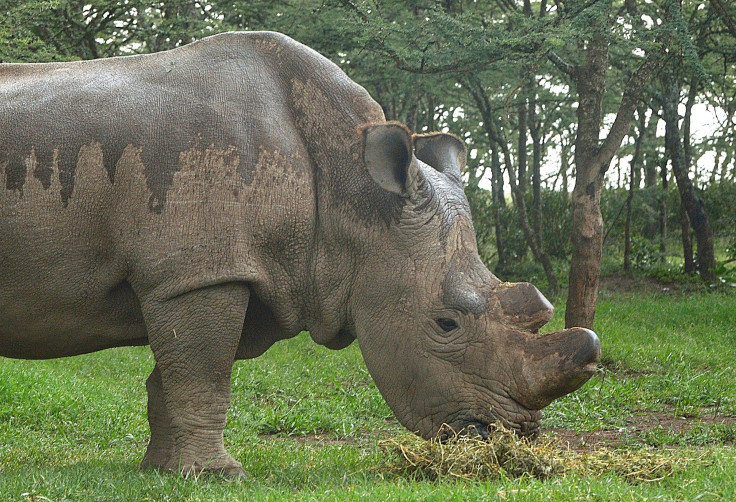Last Male Northern White Rhino Falls Ill, Future ‘Not Looking Bright’

Last November, a tweet from biologist Daniel Schneider with a picture of the world’s last male Northern White Rhinoceros went viral. Thanks to unregulated poaching, that particular subspecies is down to just one living male rhino, named Sudan, and two females.
Want to know what extinction looks like? This is the last male Northern White Rhino. The Last. Nevermore pic.twitter.com/o4obIQUpaR
— Daniel Schneider (@BiologistDan) November 6, 2017
Bad news came out Wednesday night as it was revealed that Sudan’s health is in decline in his advanced age, NBC Washington reported. The Ol Pejeta conservancy where the three remaining Northern White Rhinos live announced on Twitter that Sudan, at age 45, was “ailing” and things were “not looking bright” for him.
So many people have supported the northern white rhinos since they arrived on Ol Pejeta in 2009, and we feel it is important to inform you that Sudan, the last male northern white rhino on the planet, is starting to show signs of ailing. pic.twitter.com/BMNTprww57
— Ol Pejeta (@OlPejeta) March 1, 2018
Sudan developed an infection on his leg at the end of 2017, but the team of around-the-clock veterinarians who care for him were able to effectively treat it. His demeanor improved for a time, but in recent weeks, it was discovered that a significantly deeper infection had taken hold beneath the first one. Recovery has not been as smooth this time, and with Sudan at the upper limit of the species’ life expectancy, his team is worried.
There were as many as 2,000 Northern White Rhinos in Africa in the 1960, but the population has dwindled to just three, per NBC Washington. Scientists want to save the species by using Southern White Rhinos, which number around 20,000, as surrogates. But if Sudan dies, the survival odds of his species may go with him.
Ol Pejeta partnered with the dating app Tinder in 2017 to raise funds for conservation efforts and save the species from extinction. The campaign referred to Sudan as “the most eligible bachelor in the world.”

© Copyright IBTimes 2025. All rights reserved.





















